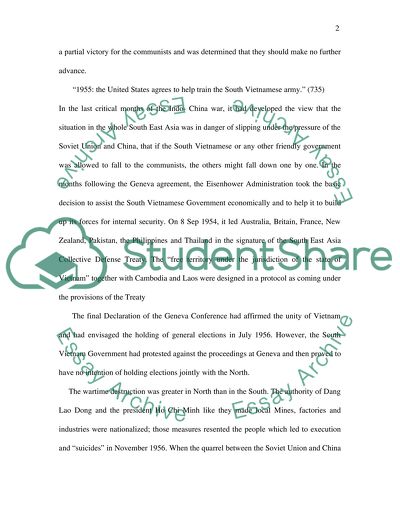Cite this document
(“How can we explain Americas involvement in the Vietnam War. To what Essay”, n.d.)
How can we explain Americas involvement in the Vietnam War. To what Essay. Retrieved from https://studentshare.org/miscellaneous/1519789-how-can-we-explain-americas-involvement-in-the-vietnam-war-to-what-extent-did-america-get-it-wrong-terribly-wrong
How can we explain Americas involvement in the Vietnam War. To what Essay. Retrieved from https://studentshare.org/miscellaneous/1519789-how-can-we-explain-americas-involvement-in-the-vietnam-war-to-what-extent-did-america-get-it-wrong-terribly-wrong
(How Can We Explain Americas Involvement in the Vietnam War. To What Essay)
How Can We Explain Americas Involvement in the Vietnam War. To What Essay. https://studentshare.org/miscellaneous/1519789-how-can-we-explain-americas-involvement-in-the-vietnam-war-to-what-extent-did-america-get-it-wrong-terribly-wrong.
How Can We Explain Americas Involvement in the Vietnam War. To What Essay. https://studentshare.org/miscellaneous/1519789-how-can-we-explain-americas-involvement-in-the-vietnam-war-to-what-extent-did-america-get-it-wrong-terribly-wrong.
“How Can We Explain Americas Involvement in the Vietnam War. To What Essay”, n.d. https://studentshare.org/miscellaneous/1519789-how-can-we-explain-americas-involvement-in-the-vietnam-war-to-what-extent-did-america-get-it-wrong-terribly-wrong.


